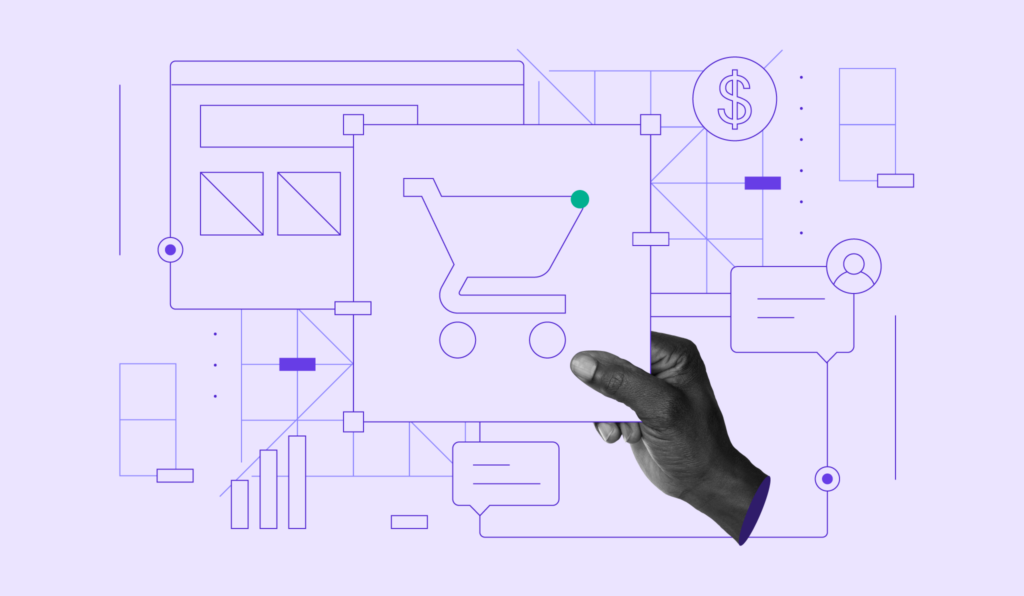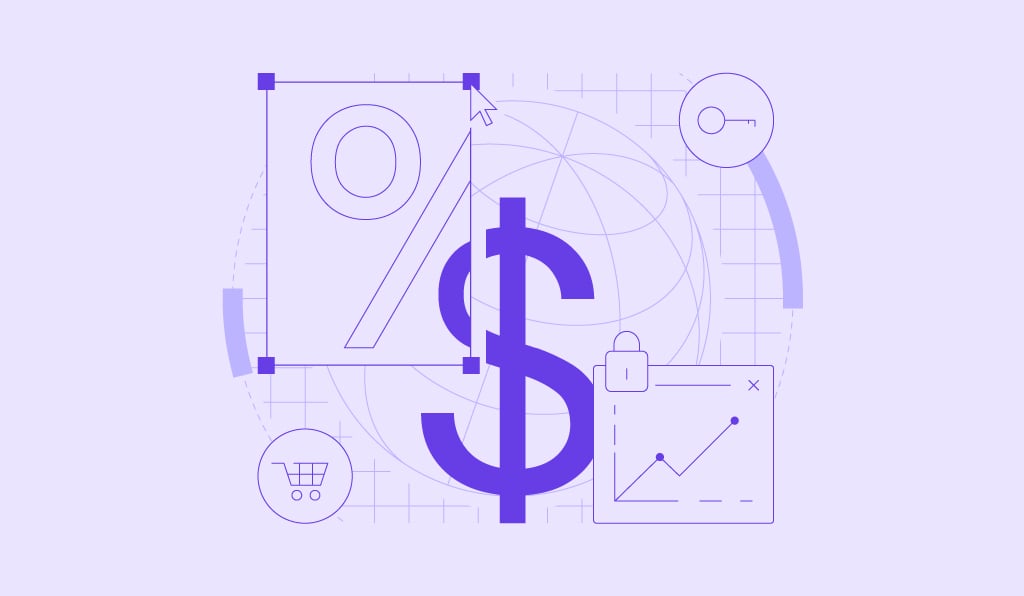How to improve the ecommerce customer experience
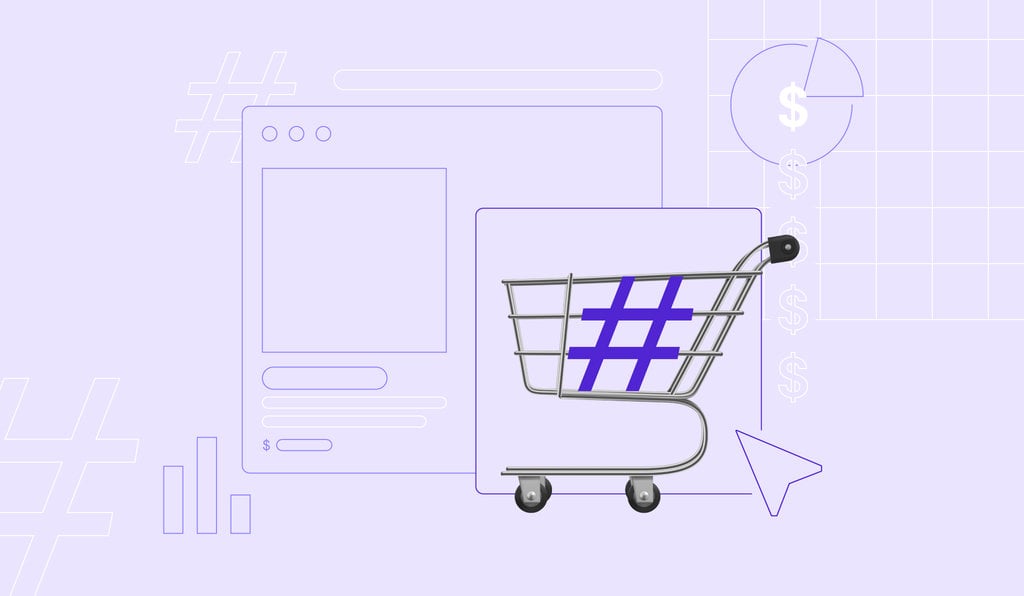
Improving your ecommerce customer experience involves personalizing interactions, streamlining the checkout process, optimizing post-purchase engagement, and offering responsive support across multiple channels. The right technology and data can help you create a customer-first approach that drives engagement and loyalty.
In short, great products and services attract customers, but it’s the experience that keeps them coming back.
Keep reading as we show you exactly how to improve your ecommerce customer experience and share ways to measure its impact.
What is ecommerce customer experience or ecommerce CX?
Ecommerce customer experience (CX) is the entire journey a customer goes through when shopping on your site, from browsing products to making a purchase and everything in between. It focuses on creating a smooth, enjoyable process that makes shopping easy and personalized.
In ecommerce, a positive experience can convert one-time buyers into loyal, repeat customers. PwC’s report on CX highlights that 59% of customers will walk away after several bad experiences, and 17% will leave after just one.
By prioritizing customer experience, you’ll reduce churn and boost the chances of repeat purchases, leading to a solid return on investment over time and increased brand loyalty.
Pro Tip
Learn how to create an ecommerce website that prioritizes customer experience from the start to build a strong foundation for success.
Now that you understand the importance of the ecommerce customer experience, let’s explore seven ways to improve it in your online store.
1. Personalize every touchpoint
Touchpoints are the specific moments when customers connect with your brand. These include anything from landing on your homepage, getting an email, browsing products, to checking out, or even getting post-purchase support.
Making each of these experiences feel personal and relevant increases customer satisfaction, makes them feel valued, and leaves a stronger impression.
A simple but effective way to do this is by recommending products in your ecommerce store based on the customer’s real-time or chosen location, like Amazon does. Tailoring product suggestions helps shoppers find what they need faster and reduces issues such as shipping delays or out-of-stock items, increasing the chances of sales.
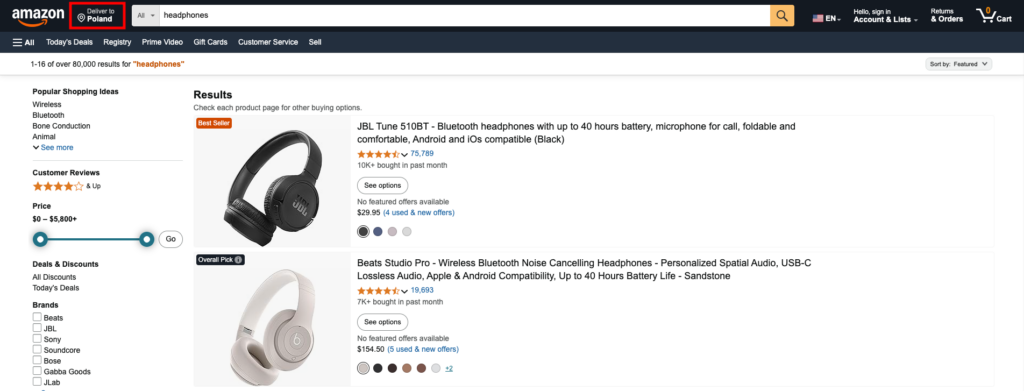
Here are other examples of personalization to improve customer experience:
- Customized email campaigns with product suggestions, exclusive deals, or content tailored to past purchases.
- Behavior-triggered notifications, like reminders for items left in the cart or alerts on price drops.
- Remembering user preferences like saved sizes or favorite categories.
- Curating delivery options for the customer’s country.
- Automatically switching interface language based on the user’s browser settings.
- Tailoring marketing campaigns across different platforms to reach customers with relevant messages. Learn more in our guide about ecommerce marketing channels.
Did you know?
Our AI store builder simplifies personalization with customizable shipping rules and a built-in product recommendation feature. Plus, our AI-powered email marketing helps you boost your campaigns effortlessly.
2. Simplify and secure the checkout process
Did you know that nearly one in five U.S. shoppers abandon their carts because the checkout feels too long or complicated? According to a study by the Baymard Institute, a similar percentage walk away because they don’t trust the website with their credit card info or don’t want to create an account just to buy something.
If this sounds like an issue your ecommerce business might be having, start from implementing ecommerce security measures. Basic ones you can implement on your own include using strong passwords and secure payment gateways, and avoiding storing confidential data online. Hosting your store on a secure platform like Hostinger will take care of the rest.
Next, for a seamless customer experience, consider reducing the number of fields customers need to fill out. A good rule of thumb is to only ask for information essential to complete the transaction. Keep the interface distraction-free with clear steps and, if possible, a progress bar so shoppers always know where they are.
Consider offering a guest checkout, if you don’t already have one. This allows people to buy without creating an account, removing a big barrier in the customer journey. You still get the info you need to process orders without the signup hassle.
Finally, make sure you offer payment options your customers prefer ‒ credit cards, PayPal, Apple Pay, or buy-now-pay-later. Providing trusted, familiar choices helps shoppers feel secure and ready to complete their purchase.

3. Offer responsive, multi-channel customer support
Our ecommerce statistics show that 47.2% of customers prefer live chat when reaching out to support. Still, providing other channels like phone support, email, and self-service portals, makes help more accessible to more people.
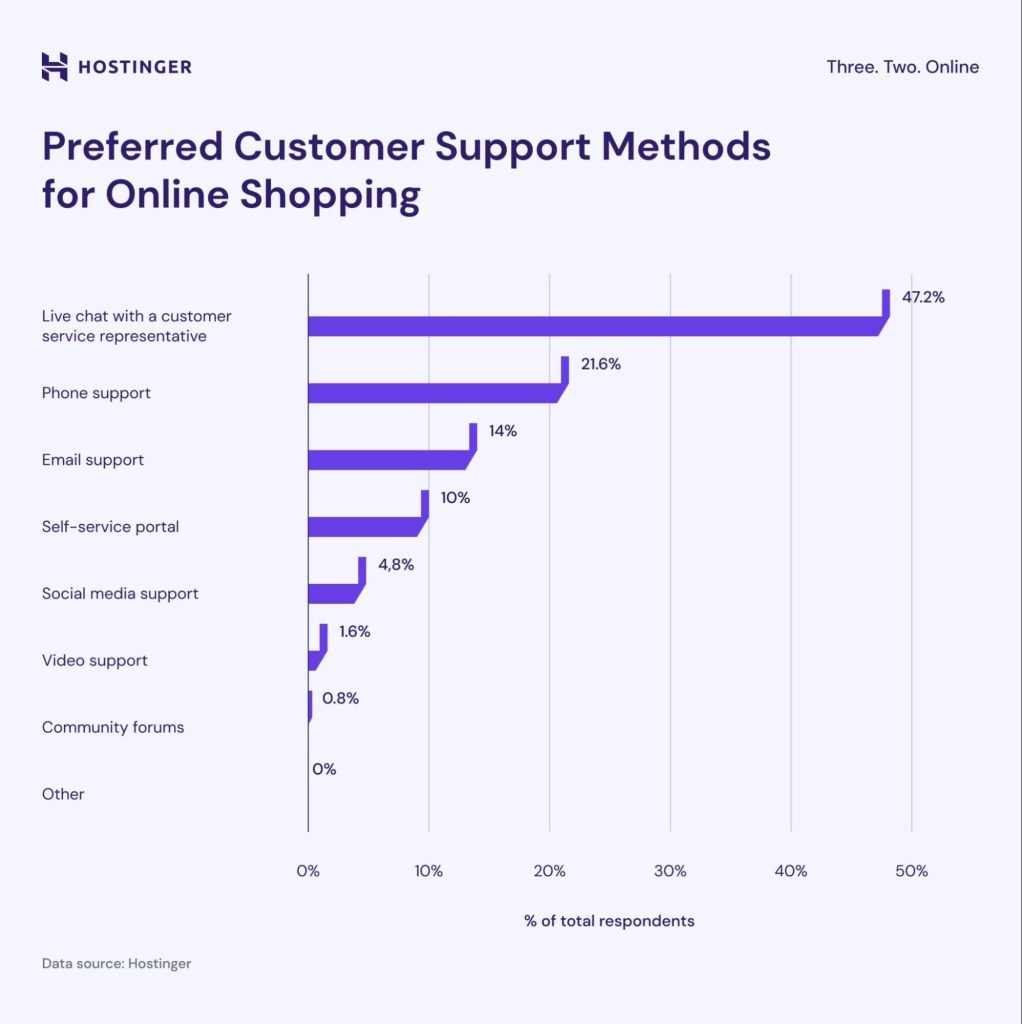
Besides providing peace of mind, having multiple support channels helps resolve issues that might otherwise stop customers from completing a purchase (or worse, from coming back to your brand).
If you have the budget, consider investing in a customer support software run by your own team or a reliable third-party provider for quick, consistent help. Otherwise, a clear, easy-to-navigate FAQ page can still reduce customer service requests and help customers find answers on their own without extra cost.
Most importantly, to provide an exceptional customer service, make sure to create a clear and easy-to-find contact page that shows customers exactly how to get help. You can even take it a step further like Dyson does by making your contact details visible in search results. At the very least, place them prominently throughout your store so customers can quickly find support when they need it.
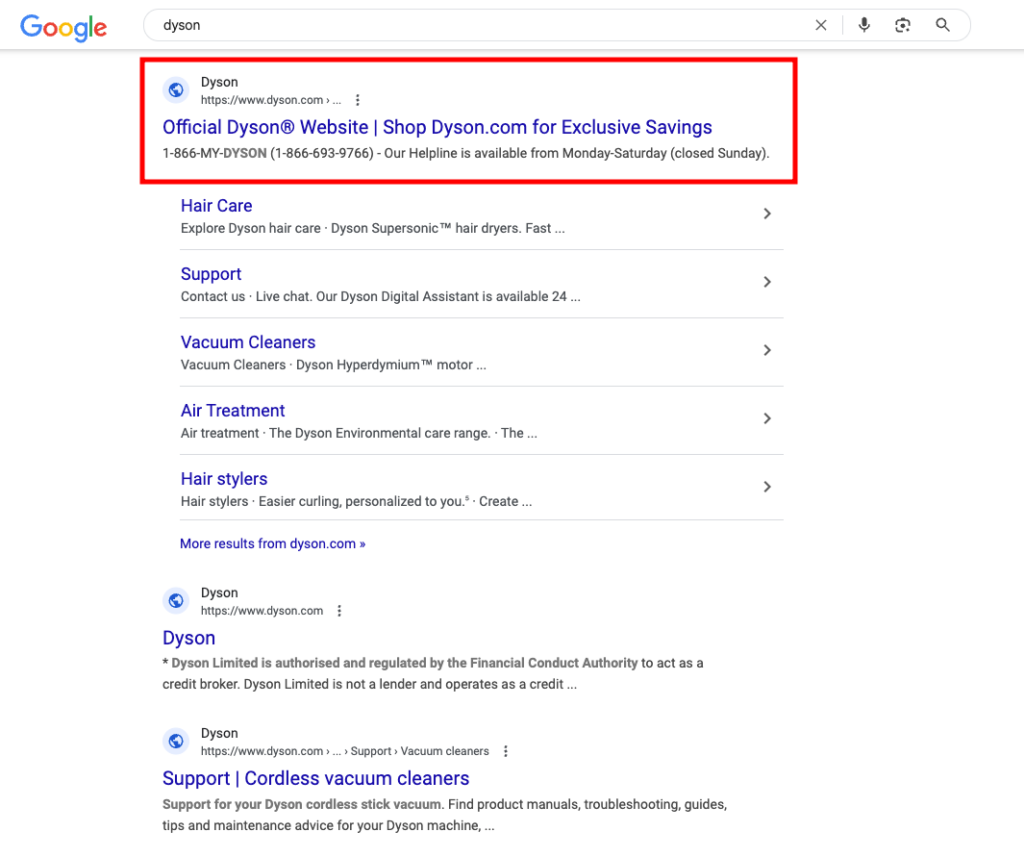
4. Build trust with transparency and social proof
When purchasing online, people want to be sure they are making a smart purchase, especially when they can’t physically see or touch the product.
One easy way to instill this confidence is by adding customer reviews and testimonials on your product pages. Showing social proof like sales numbers or positive ratings works just as well, boosting your brand’s credibility and helping shoppers feel more comfortable buying from you.
The clothing brand Quince makes building trust easy by asking customers to tag them on social media when they wear their clothes. They then feature these real photos right on their online store, linking each one back to the product page. It’s a great way to show new shoppers real people loving the products, give a shoutout to loyal customers, and make it really simple to buy what you see.
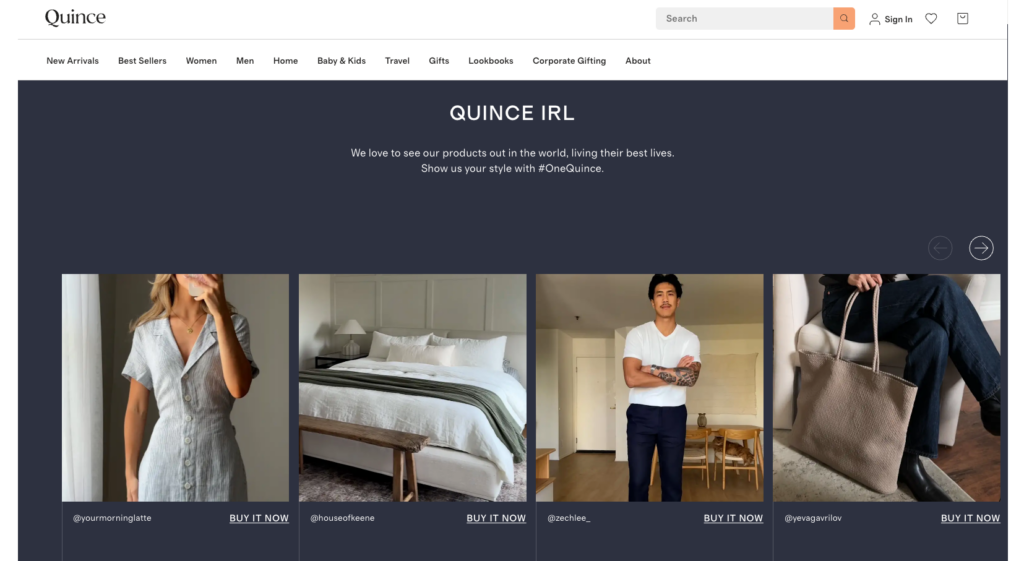
Additionally, be upfront about your shipping and return policies. Sharing any fees, delivery times, or return windows helps customers know exactly what to expect ‒ making them feel more confident and reducing surprises down the line.
5. Leverage emerging technology
Ecommerce is already built on technology, so why not use it to its full potential to grow your business?
Artificial intelligence (AI) is a rising star worth investing in. Chatbots like our Kodee can handle common questions and simple problems, cutting down support requests and speeding up help for customers. AI also personalizes shopping with virtual assistants and makes inventory management more efficient. There’s so much this technology can do that we even wrote a whole article about the use of AI in ecommerce.
Augmented reality (AR) and virtual reality (VR) let customers see products in their own space or try them on before buying. This is really helpful for fashion and furniture brands like Decathlon and IKEA as it removes the guesswork and makes shoppers feel more confident, resulting in fewer returns and a more unique customer experience.

If these technologies feel too advanced or expensive, start simple with mobile optimization. Our web design statistics find that websites that are not optimized for mobile can lose up to 60% of visitors, and that half of users won’t recommend sites that are hard to navigate on phones. Check out our guide on making a website mobile-friendly for tips and best practices.
Ecommerce customer experience trends
Staying ahead means not just meeting customer expectations – it also means keeping an eye on the top ecommerce trends ‒ many of which are driven by emerging technologies.
Here are some top customer experience trends in ecommerce:
- Four in five shoppers are more likely to return if they get a personalized shopping experience.
- More people are researching online and buying in-store (ROPO), so using multiple sales channels is key. Companies with omnichannel campaigns see 494% more orders.
- Shoppers like AR and VR, with companies using these technologies seeing 94% more sales.
- Buy Now, Pay Later helps cut cart abandonment by 35%.
- Around 47% of customers use voice commands to buy online, and 58% are happy with the experience.
6. Optimize post-purchase engagement
Building customer loyalty and trust doesn’t stop at checkout, so your engagement should continue even after someone buys from you.
If you’re shipping a product, provide clear order tracking and delivery updates. Even better, follow Viva La Dirt League’s example by including an easy way for customers to ask for support if they need it. When shoppers know exactly where their package is and when it will arrive, it relieves delivery concerns and shows that you care about their experience.
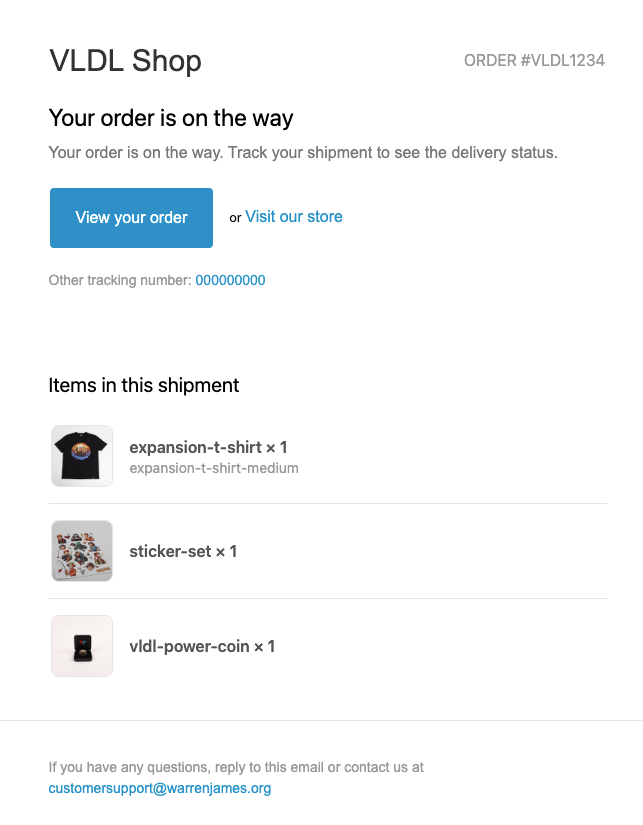
Beyond updates, add value by sending personalized product tips. For example, we email clients who start with a temporary domain a helpful guide on connecting a custom domain, plus tips for picking the right one.

Inviting customers to join a loyalty program right after their purchase is another smart move. Sephora does this well, explaining how to earn points and rewards on future purchases. This simple invite can turn first-time buyers into regulars.
Finally, ask for reviews after delivery to show you want honest feedback and are always looking to improve. To encourage more people to share their thoughts on their customer experience, offer incentives like loyalty points or discounts for leaving a review.
Did you know?
Hostinger AI store builder has a product reviews feature to collect and manage customer feedback hassle-free.
7. Boost customer experience through data
Using what you learn from your customers, like how they shop and what they prefer, helps you make their next experience even better. When you know what they need, you can communicate personally and offer what truly fits.
Start by grouping your customers based on your chosen metrics. If you use purchase frequency, focus on welcoming first-time buyers, explaining how your products work, or offering a discount to encourage repeat purchases. For loyal customers, offer exclusive deals, early access to new products, or invite them to a VIP program to reward their loyalty.
Other common segmentation metrics include average order value (AOV), location, device, and purchased product categories.
You can also use predictive analytics ‒ a method to analyze past data and guess what might happen next ‒ to predict trends. For example, if someone often buys running gear, it makes sense to recommend new shoes or accessories that have just launched.
The goal is to make your customers feel like you really understand what they want and need.
How to measure ecommerce customer experience
To improve the ecommerce customer experience and customer journey, you first need to know how it’s performing. Tracking the right metrics helps you spot what’s working and what needs fixing. Let’s explore key metrics to measure it.
Net Promoter Score (NPS)
If you’re interested in knowing whether your customers spread the word about your product, pay attention to this metric. On a scale from zero to ten, higher scores mean they’re more likely to recommend you, indicating an overall positive customer experience.
Customers fall into three groups based on their scores:
- Promoters (9-10) ‒ loyal fans who actively promote your brand.
- Passives (7-8) ‒ satisfied but unenthusiastic customers who could switch to competitors.
- Detractors (0-6) ‒ unhappy customers who might damage your reputation through negative feedback.
To calculate NPS, subtract the percentage of Detractors from Promoters.
Customer Satisfaction (CSAT)
Use this metric to measure how happy customers are with your product, service, or experience. Customers respond using a scale such as one to five, or a simple “great-okay-not good” option.
Or, use emojis like Hostinger’s Customer Success Team when measuring customer experience with support interactions. Emojis make it quick and easy for customers to share how they feel, especially for those who find numbers less intuitive.

The CSAT score is calculated by dividing the number of satisfied customers who give high ratings by the total number of responses, then multiplying by 100 to get a percentage. The higher the score, the happier your customers are with your brand.
Customer Effort Score (CES)
This metric focuses on how much effort customers put in to get help or complete a task. A higher score shows customers find it easier to interact with your business, usually leading to greater satisfaction and loyalty.
CES usually uses a number scale, like one to five. However, you can use emojis or words like for CSAT to make it easier for customers to respond.
Conclusion
Great customer experience keeps people coming back and drives long-term growth, which is why investing in it is key to success. There are many ways to improve customer satisfaction, but personalizing how you connect with customers should always come first.
Using metrics like Net Promoter Score (NPS), Customer Satisfaction (CSAT), and Customer Effort Score (CES) gives you valuable insights into how well your efforts are working. Emerging technologies like AI can help streamline data collection and make your customer experience more unique and targeted.
Improving customer experience is an ongoing journey, so why not start today?
All of the tutorial content on this website is subject to Hostinger's rigorous editorial standards and values.

